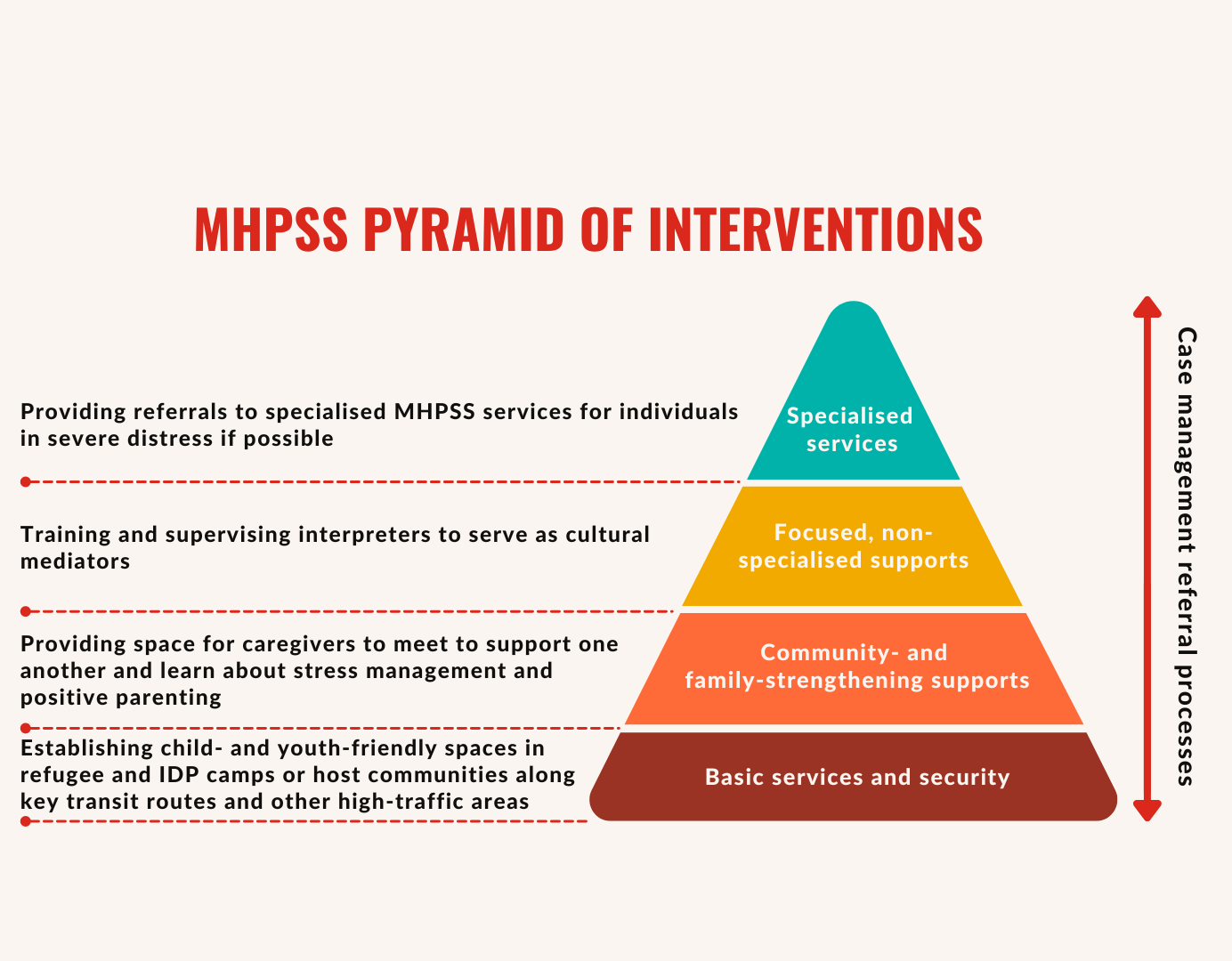Children on the Move
MHPSS RECOMMENDATIONS FOR CROSS-SECTORAL THEMES
Although the reasons, patterns and consequences of children’s movement are diverse and complex, many of the risks they face are universal.
Read the summary below or access the full guidance.

Although the reasons, patterns and consequences of children’s movement are diverse and complex,[1] many of the risks they face are universal. Children and adolescents in transit are often exposed to sexual and gender-based violence, forced labour, extortion, exploitation and other abuses.[2] Existing stresses and worries combined with uncertainty about the future can cause severe emotional distress and related conditions.
MHPSS programming must be based on an understanding of the drivers that cause children to move if it is to support well-being and prevent toxic stress, distress and mental health conditions. Above all, programming must recognise, understand and support children’s role in decision making, both as a trigger for movement and as a force for their own self-protection.[3]

[1] SCI (2018) Protecting children on the move.
[2] IOM, 2020
[3] International Organization for Migration (2013) Children on the Move.
